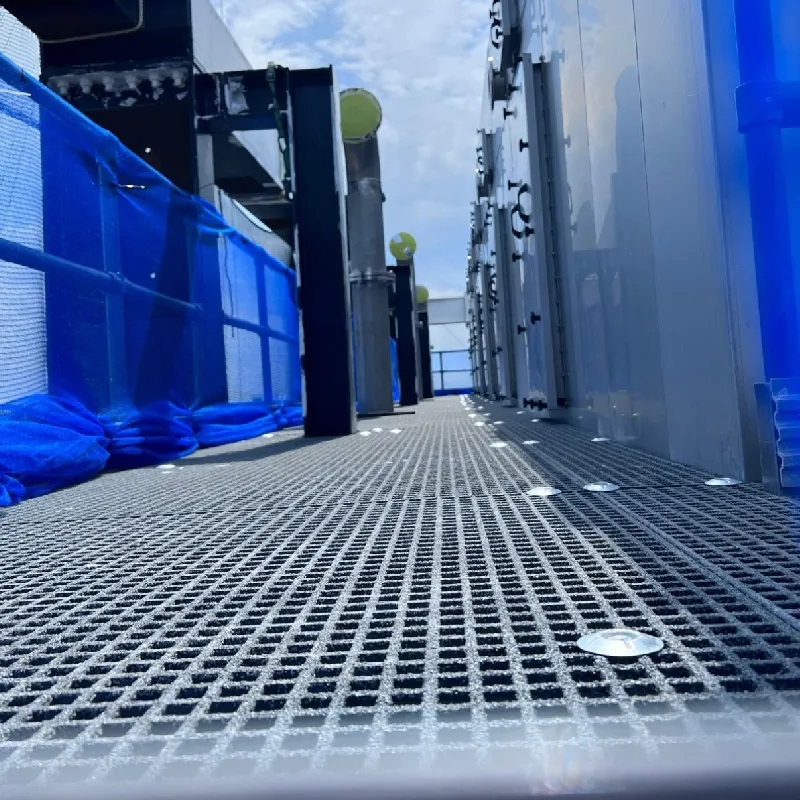loading...
- No. 9, Xingyuan South Street, Dongwaihuan Road, Zaoqiang County, Hengshui, Hebei, China
- admin@zjcomposites.com
- +86 15097380338
- Welcome to visit our website!
gfrp rod
Understanding GFRP Rods Applications, Benefits, and Future Perspectives
Glass Fiber Reinforced Polymer (GFRP) rods have emerged as a revolutionary material in the field of construction and engineering due to their unique properties and advantages over traditional materials. Composed of a composite material that combines glass fibers with a polymer matrix, GFRP rods offer superior strength, lightweight characteristics, and resistance to corrosion, making them an increasingly popular choice in various applications.
Composition and Properties
GFRP rods are primarily made by combining continuous glass fibers with a thermosetting polymer resin, resulting in a material that boasts high tensile strength and low weight. This combination provides GFRP with several distinct properties
1. Corrosion Resistance Unlike traditional steel rebar, GFRP rods do not corrode when exposed to moisture or chemicals, making them ideal for use in harsh environments such as coastal areas or industrial facilities.
2. Lightweight GFRP rods can be significantly lighter than steel reinforcements, facilitating easier handling and installation while reducing the overall weight of structures.
3. High Strength-to-Weight Ratio The tensile strength of GFRP rods is comparable to that of steel, enabling engineers to use less material without sacrificing structural integrity.
4. Non-Magnetic and Non-Conductive GFRP rods are non-magnetic and non-conductive, making them suitable for applications in environments where electromagnetic interference is a concern.
Applications of GFRP Rods
The versatility of GFRP rods allows them to be used in various applications, including
1. Reinforced Concrete Structures GFRP rods can be used as an alternative to steel rebar in concrete reinforcement, providing enhanced durability, particularly in structures exposed to corrosive agents.
2. Bridge Construction Due to their lightweight nature and corrosion resistance, GFRP rods are increasingly being used in bridge construction, enhancing longevity and reducing maintenance costs.
gfrp rod

4. Utility and Telecom In utility applications, GFRP rods are frequently used as replacement for traditional conductors because they do not corrode and can support cables effectively.
5. Sports and Recreational Structures GFRP rods contribute to the construction of lightweight and durable sporting facilities, as well as recreational infrastructure like park benches and playgrounds.
Advantages of GFRP Rods
The benefits of utilizing GFRP rods over conventional materials are substantial
1. Cost Efficiency Although the initial cost of GFRP may be higher than that of steel, the long-term savings from reduced maintenance and increased durability can outweigh initial expenditures.
2. Sustainability GFRP rods can contribute to sustainable construction practices. Their longevity reduces the frequency of repairs and replacements, which, in turn, minimizes waste and resource consumption.
3. Performance under Various Conditions GFRP maintains its properties across a wide range of temperatures and environmental conditions, meaning it can perform reliably in adverse weather and climates.
4. Design Flexibility The versatility of GFRP allows for innovative architectural designs that may not be feasible with traditional materials due to weight and strength limitations.
Challenges and Future Prospects
Despite the numerous advantages, GFRP rods also present some challenges, including the need for specialized testing and lack of familiarity among construction professionals. Furthermore, the long-term performance and behavior of GFRP in various environmental conditions are still under investigation.
Looking to the future, the demand for GFRP rods is expected to grow as more engineers and architects become aware of their benefits. Ongoing research is likely to address current limitations, improving the performance characteristics of GFRP and potentially lowering manufacturing costs. As sustainability becomes an increasingly critical consideration in construction, the environmental benefits of GFRP will also position it as a material of choice.
In conclusion, GFRP rods represent a significant advancement in construction materials, combining strength, durability, and resistance to corrosion with a lightweight profile. Their applications are broad and varied, with the potential to significantly enhance structural performance across multiple industries. As innovation continues, GFRP rods will undoubtedly play a pivotal role in shaping the future of construction and engineering.
-
The Expansive Industrial Reign of FRP Pressure VesselsNewsAug.22,2025
-
Manufacturing Premium FRP Square Pipes for Global Wholesale ExcellenceNewsAug.22,2025
-
Strategic Applications for FRP Grating SolutionsNewsAug.22,2025
-
Material Science Forging GRP Water Tank LongevityNewsAug.22,2025
-
The Engineered Excellence: Material Science Behind FRP Railing SystemsNewsAug.22,2025
-
How Digital Pultrusion Revolutionizes FRP Profile WholesalingNewsAug.22,2025
-
The Rise of FRP Profiles: Strong, Lightweight, and Built to LastNewsJul.14,2025
